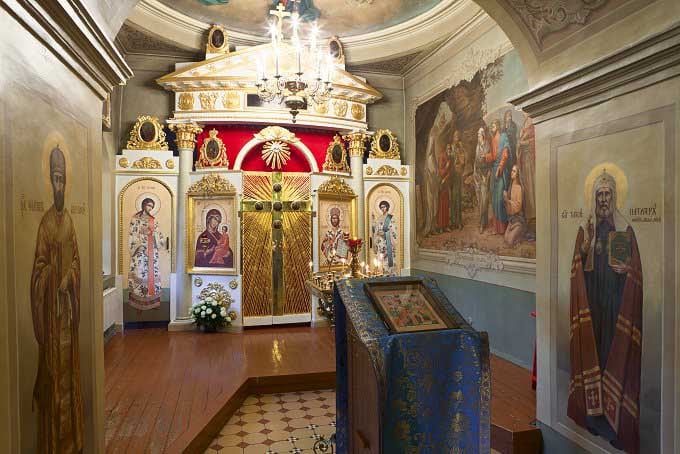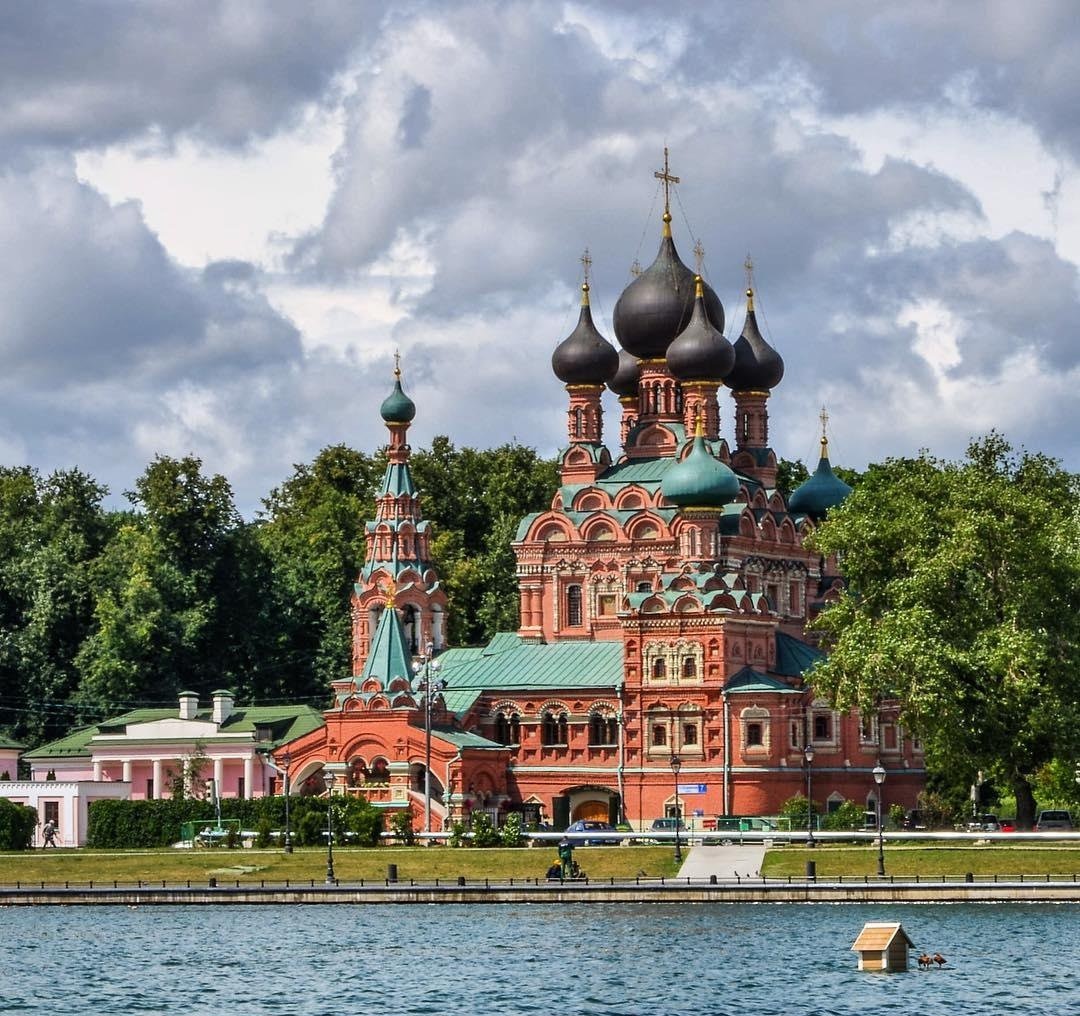Church of the Holy Life-giving Trinity in Ostankino

The Church of the Life-Giving Trinity in Ostankino is a parish church of the Trinity Deanery of the Moscow City Diocese of the Russian Orthodox Church. Over three hundred years ago, Patriarch Joachim of Moscow and All Russia blessed Prince Mikhail Cherkassky to build a new stone church to replace the old wooden one, dedicated to the Life-Giving Trinity. In the new church, the prince decided to add two chapels: one in honor of the Tikhvin Icon of the Mother of God and the other in honor of St. Alexander Svirsky. The old church was demolished due to a plague and numerous burials on its site. The village of Ostankino (formerly Ostashkovo on the Sukhodol) has been known since 1548. After the Time of Troubles, it became the estate of Prince Ivan Borisovich Cherkassky. By 1617, there was already a church dedicated to the Life-Giving Trinity. In 1625–1627, a new wooden church was built, but by the mid-17th century, it had fallen into disrepair. Prince Mikhail Yakovlevich Cherkassky decided to replace it with a stone church, submitting a petition for its construction in 1678. Mikhail Cherkassky was a major landowner, possessing 9,083 households. In the 17th century, Ostankino was his main suburban estate. The prince actively built churches, including the Church of St. Nicholas the Wonderworker in the Novospassky Monastery and the Church of the Life-Giving Trinity in Ostankino. The new church in Ostankino, consecrated in 1692, became the Cherkassky family’s private church. It had three chapels: the northern one in honor of the Tikhvin Icon of the Mother of God, the southern one in honor of St. Alexander Svirsky, and the central one in honor of the Life-Giving Trinity. In the 18th century, Ostankino remained the main suburban residence of the Cherkassky family, although with the transfer of the capital to St. Petersburg, the owners visited the estate less frequently. In the 1730s and 1740s, Empress Anna Ioannovna and Empress Elizabeth Petrovna stayed in Ostankino. After the death of Prince Alexei Mikhailovich Cherkassky in 1742, the estate passed to his daughter Varvara, who married Count Pyotr Borisovich Sheremetev and moved to Kuskovo. The church remained untouched until her death in 1767. Later, Pyotr Borisovich altered the church’s appearance, updated the iconostasis, and added new icons. In 1788, Ostankino was inherited by their son Nikolai Sheremetev, who continued to support the church and the estate. In the early 19th century, the Sheremetev family moved to St. Petersburg. The young countess died in childbirth, and the grieving count financed the construction of charitable institutions, including a major hospice (now the Sklifosovsky Institute for Emergency Medicine). Six years later, the count himself passed away, and the estate was inherited by his minor son Dmitry Nikolaevich, under whom the church was restored and repainted. In 1851, the narthex was painted, and the main altar was painted the following year. Ostankino became a popular place for walks and entertainment. During one of his visits, Emperor Nicholas I noted that a grove obstructed the view of Moscow, and upon his next visit, a clearing with a view of the Kremlin had been created. In 1856, Emperor Alexander II chose Ostankino for seclusion before his coronation. The church was renovated, and on August 18, the royal family attended a prayer service there. In 1866, Dmitry Sheremetev brought the miraculous Iveron Icon of the Mother of God to Ostankino, which was carried to local residents’ homes. In 1875, the new owner of the estate, Alexander Sheremetev, initiated the church’s restoration. In 1919, due to poverty, the parish moved to the lower church, consecrated in honor of St. Nicholas. In 1922, valuables were confiscated from the church. In the 1930s, the church became part of the Anti-Religious Museum, and its basement was used to store potatoes. During World War II, the church was used as a storage facility. Restoration began in the 1970s, and in the 1980s, concerts of sacred and secular music were held there. In 1991, Patriarch Alexy II consecrated the altar in honor of the Holy Life-Giving Trinity. In 1994 and 1996, chapels in honor of St. Alexander Svirsky and the Tikhvin Icon of the Mother of God were consecrated.
Address: Moscow, 1st Ostankinskaya str., dvl. 7, p. 2

